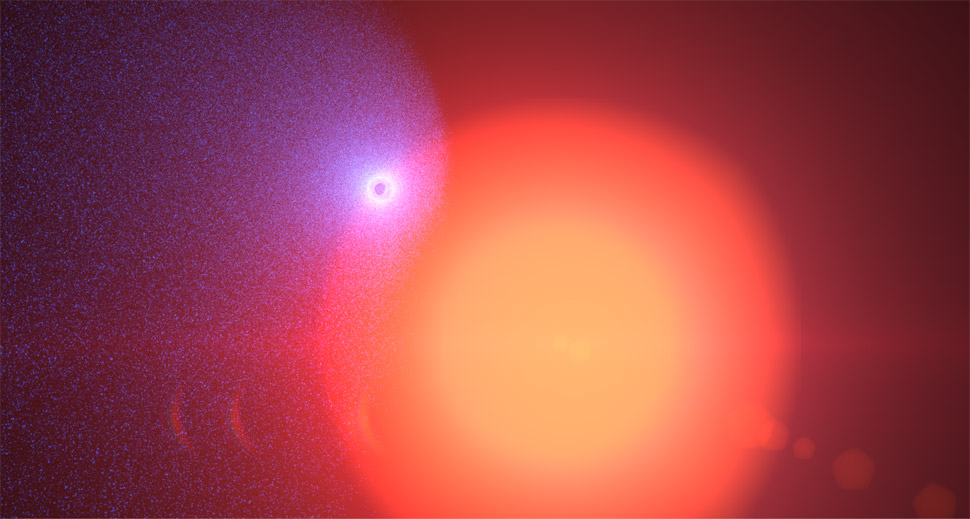
25th June 2015 New type of comet-like planet is discovered Astronomers report the discovery of a new type of planet, resembling a giant comet.
Astronomers using NASA's Hubble Space Telescope have discovered an immense cloud of hydrogen – dubbed "The Behemoth" – which is trailing away from a planet orbiting a nearby red dwarf. This huge, comet-like feature is about 50 times the size of the star. Located 33 light years away, Gliese 436 b is a "warm Neptune" circling just 3 million miles (4.8 million km) from its host, or about 13 times smaller than the distance between Mercury and our Sun. It takes only two days and 15.5 hours to complete one orbit. This close proximity and the extreme radiation from the parent star have been gradually stripping away the atmosphere of Gliese 436 b. It is currently losing about 1,000 tons of gas per second. "This cloud is very spectacular, though the evaporation rate does not threaten the planet right now," explains the study's leader, David Ehrenreich from the University of Geneva in Switzerland. "But we know that in the past, the star, which is a faint red dwarf, was more active. This means that the planet evaporated faster during its first billion years of existence. Overall, we estimate that it may have lost up to 10 percent of its atmosphere." The cloud of hydrogen forms a circular head surrounding Gliese 436 b, measuring about 1.8 million miles (3 million km) in diameter. The tail behind it stretches up to 9.3 million miles (15 million km) in length, based on the researchers' computer models. This comet-like planet is the first of its kind to ever be recorded. This type of observation is very promising in the search for habitable planets since "hydrogen from the ocean water that evaporates on slightly hotter terrestrial planets than the Earth could be detected," as Vincent Bourrier suggests, co-author of these results. Its discovery could also help scientists to envisage the distant future of our own planet, billions of years from now, when the Sun becomes a red giant and expands to engulf our atmosphere. It is hypothesised that the Earth would be turned into a giant comet, just like Gliese 436 b. The James Webb Space Telescope, due for launch in 2018, could provide more accurate data and fresh insights into this system. The study was published yesterday in the journal Nature.
Comments »
|







